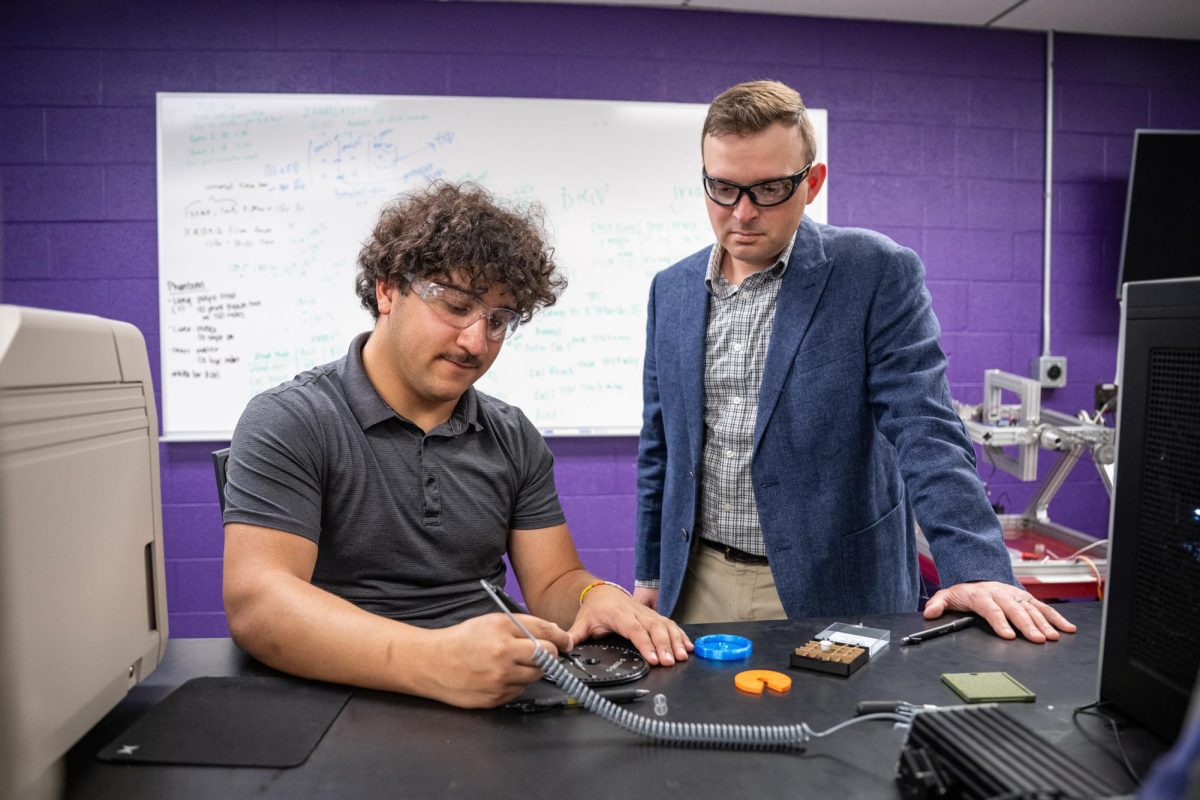
Dr. Amir Bahadori observes student project work in the nuclear engineering program’s lab. (Photo courtesy of Kelsie Jones)
According to the Environmental Protection Agency, everyone is exposed to radiation every day, primarily from natural background radiation, which is present in soil and other man-made sources. Dr. Amir Bahadori, the nuclear engineering program director and professor in the department of mechanical and nuclear engineering at Kansas State, said there are some professions that receive exposure every day.
Bahadori specializes in radiation protection, working to “implement methods to ensure that people are adequately protected from the health effects of ionizing radiation.”
“I started here at K-State as an undergraduate and worked at the [nuclear] reactor, and through that process I became interested in [this work],” Bahadori said. “Then I did graduate work at the University of Florida, and after that I ended up working at NASA’s Johnson Space Center on astronaut radiation protection.”
X-ray techs, flight crews and similar occupations receive more radiation than most people experience in their day-to-day lives, Bahadori said. While there are regulations in place to protect people from the immediate negative effects of radiation exposure, scientists wonder how this exposure will affect people over a lifetime of work. Because of this, Bahadori and other scientists have been working on a large study to understand how chronic exposure to radiation affects our bodies.
A key aspect of this work is its connection to the Million Person Study, a study conducted by the National Council on Radiation Protection and Measurements. Bahadori said the project aims to bridge the gap in understanding the long-term effects on populations exposed to low levels of radiation by studying a group of approximately one million people across the United States who were workers and veterans of the 20th century.
Although this study is a long and ongoing process, scientists have begun to see some results and have published those findings, Bahadori said, one being that radiation exposure may increase the risk of neurodegenerative diseases such as Parkinson’s, though he said those findings have yet to be completely proven. One goal of the Million Person Study is to understand a “dose-response relationship” in order to develop models to inform health officials of what regulations should be in place regarding radiation exposure.
“One of the main limitations of those types of models is that the data from them is based on the atomic bomb survivors … most of the exposures that we’re concerned with now are occupational in nature,” Bahadori said. “They usually experience their radiation exposure over a 20 or 30-year career.”
Similarly, Bahadori said while current regulations provide adequate protection, regulators are always looking for ways to improve radiation protection practices. For instance, many European countries track the amount of radiation exposure flight crews experience, Bahadori said. The U.S. does not.
Bahadori said scientists want people to be comfortable with things such as nuclear power or medical exams that involve radiation.
“We want to know what people are worried about while, at the same time, hopefully providing some context to the things that we’re doing around these sorts of technologies,” he said.
Bahadori said members of the community are free to come to the reactor center during events such as the University Open House and ask questions.
“We want to have that dialogue to try to put some answers to questions that people may have,” he said.